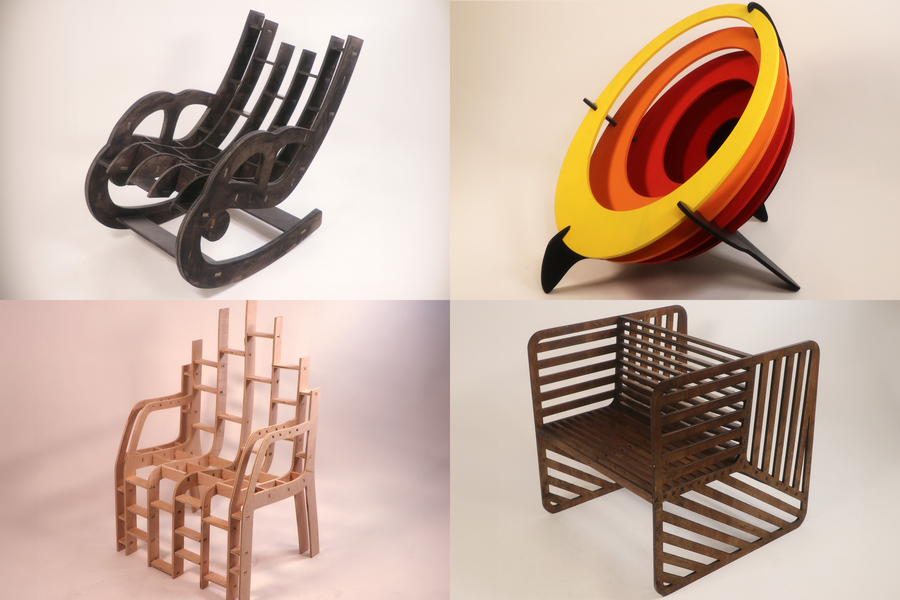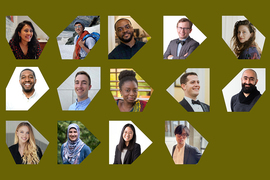Design spans disciplines and schools at MIT as a versatile mode of inquiry. Whether software, furniture, robots, or consumer products, design classes at MIT guide students through the iterative process of ideation, planning, and prototyping.
“Design is 80 percent problem-setting and 20 percent problem-solving,” says MIT Professor Larry Sass SM ’94, PhD ’00, designer and researcher in the Department of Architecture. In many MIT classes, “problem-setting” typically brings to mind a weekly sheet of exercises calling for a mathematical proof or circled answer. But in design courses, problem-setting refers to the process of defining the needs and functions to be addressed with an effective solution.
Sass is the designer and instructor of class 4.500 (Design Computation), a course centering the role of computational tools like 3D modeling, rendering, and animation in design. As a course in the Department of Architecture, 4.500 focuses on the creation and experience of an object in the built environment — in this case, the chair.
Chairs are a powerful pedagogical tool posing a challenging, scoped, and specific exercise for new designers. They have a particular and intuitive function addressing the universal need to rest and take countless shapes encouraging a variety of experiences, whether a short break or a lengthy lounge. Designers revisit the chair as an iconic object at the intersection of aesthetics and function, making dozens of careful design decisions that inform its visual and somatic experience.
“A chair is the best product for learning design,” affirms Sass. “Learning how to design a chair is hard for designers across all scales, from the nanoscale designer of instruments to the macro-scale architect of skyscrapers,” he adds. For him, a well-designed chair is “firm, affordable, and delightful.”

Reinventing the chair
Insights from students who took the course during the fall 2023 term show the thoughtful and experimental process of design. The course leaves students with not only a new piece of furniture, but also new skills and reflections on design. “The best [outcome] is that the students learn about design as the creation of an experience as part of a function,” says Sass.
Students in 4.500 begin their journey by considering the experience they wanted to design for their chairs. Junior Shruthi Ravichandran designed a chair around the experience of “gentle containment,” influenced by OTO, the “hugging chair.”
“I was very inspired by the idea of creating a chair that is both rigid and flexible at the same time — by conforming to the user’s body and offering a sense of comfort and security,” says Ravichandran.
Another student, second-year Wonu Abiodun, who was previously part of the DesignPlus First-Year Learning Community, envisioned a unique lounging chair drawing from precedents of existing seats and evocative images of yoga poses. It encourages users to “sit criss-cross and lean back to stretch their spine, creating a kind of meditative pose to drain stress from a busy day,” Abiodun explains.
The geometry of a chair ties directly into its success, motivating the use of computational modeling tools. “We need to know the heights, widths, and details of our ideas to ensure comfort and safety,” says Sass. Student designers use a suite of design software including Rhino, AutoCAD, and 3D Studio Max to realize their concepts in geometry.
Sometimes, the technology itself acts as an inspiration. For junior Frankie Schulte, the digital software and computer numerical control (CNC) fabrication — a computerized process that uses software and code to control production equipment — used in the course informed his chair design choices. “I wanted to make something with a unique form that would be challenging to recreate using traditional woodworking techniques. That meant creating unnatural, curved shapes using methods exclusive to modeling software,” says Schulte.
Making it real
After producing an initial digital model of their chair, students assemble quarter-scale models out of laser-cut masonite, a sturdy engineered wood material. Creating scale models (small but exact copies) helps students identify aspects to improve in their chair designs under material and physical constraints. Finding that some pieces would break or fall apart while building scale models, Abiodun would strengthen those parts of the design before moving on to the final chair.
Though there’s a lot of digital modeling, it doesn’t stop there because there’s also the physical aspect of sanding and routing parts, fitting them together, and testing — fingers crossed — the stability of the final product, she explains. Scale models also allow for shape exploration. Ravichandran found that each scale model of hers differed significantly.
“My models ranged from a chair that was fully made up of spheres to a chair that only had flat pieces. My final model and chair ended up in what I think is a happy middle — the seat and armrests are flat for containment and comfort, and the sides evoke the sentiment of a cloud,” she says.
Once satisfied with their scale models, students produce the full-scale prototype, keeping in mind a material limit — a single half-inch thick, 4-foot by 8-foot plywood board to be cut with a CNC machine.
Having never used such equipment before, Ravichandran sought guidance from teaching assistants and made a test object. “I built a little cloud desk organizer to test out the tolerances of the machine and see how well it could navigate around tight curves and points. This was super useful, as it helped me understand how to redesign the final file so that parts fit together snugly,” she says.
Schulte’s completed chair boasts bright colors evoking a Bauhaus-style sun. The careful arrangement of concentric circular pieces forms a seat suitable for a brief rest. “My initial precedents never had comfort in mind, and the final sitting experience certainly reflected that fact,” said Schulte. The chair has found a place in his living community lounge.
Sass has taught 4.500 (Design Computation) for the past 22 years to students across the Institute. He joined MIT's Department of Architecture faculty after earning his MS in 1994 and PhD at MIT in 2000, and 4.500 was the first course he designed as a new professor. For his long-held commitment to excellent undergraduate education, Sass was recently honored as a 2023 MacVicar Faculty Fellow, a prestigious award informed by student, colleague, and alumni letters of support.
While the course focuses on the design and fabrication of chairs, Sass emphasizes: “Everyone who completes my course can create a 3D model and prototype almost anything.”












